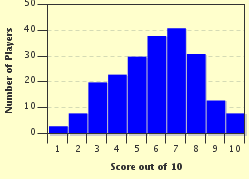Quiz Answer Key and Fun Facts
1. The "Glorious Revolution" ocurred in 1688. William the Orange (later William III) was invited to England by a group of Tories and Whigs, to replace the then-current king, who had lost the support of both. Who was this unpopular king?
2. The French Revolution is most known for the storming of the Bastille. On what day did the famous storm take place?
3. The American Revolution started as a war between the United Kingdom and the thirteen British colonies in North America, and grew from there. The treaty signed to end the war was named after what city, not part of this war when it broke out?
4. Moving south to Mexico, now. From 1910-1920 the Mexican Revolution occurred featuring the Mexican people against their leaders. What was the only country to intervene on the fight?
5. The Irish have had quite a few uprisings and revolutions, and many weren't even held on the Emerald Isle. Which of these places, famous for its treaties, was NOT a spot of an Irish revolt or event?
6. There has been a revolution named after every month of the calendar year.
7. Which revolution did many hardline German nationalists, including the Nazis, regard as a 'stab-in-the-back'?
8. The Philippine Revolution ended with the Phillipines breaking away from the Spanish Empire. Which did the Spanish call this fight?
9. From 1987 to 1991, a bloodless revolution ocurred in the Baltic countries of Latvia, Estonia, and Lithuania. What nickname did this successful revolution have?
10. In 2011, uprisings happened in many North African nations. In which case, did the leader, Hosni Mubarak step down within 20 days of the protests beginning?
Source: Author
George95
This quiz was reviewed by FunTrivia editor
bloomsby before going online.
Any errors found in FunTrivia content are routinely corrected through our feedback system.


